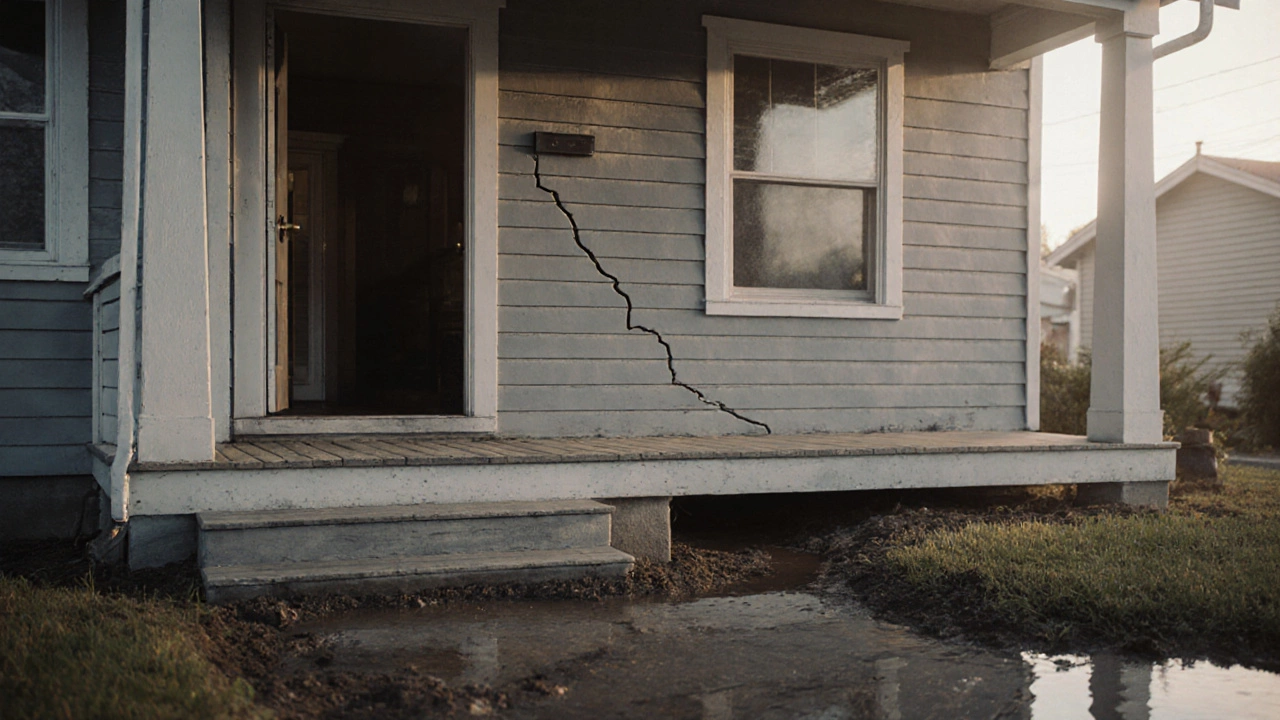Older Home Foundation Problems Explained
When dealing with Older Home Foundation Problems, issues that affect the stability and safety of aging house structures. Also known as old house foundation issues, they often show up as cracks, uneven floors, or doors that stick. Understanding these problems helps you catch early warning signs before they turn into costly repairs.
One key related concept is Major Foundation Issue, a severe defect that compromises structural integrity, like deep cracks or significant settlement. It usually demands a professional assessment and can involve underpinning, pier installation, or soil stabilization. Recognizing a major foundation issue early can save you from unsafe living conditions and huge repair bills.
Another important entity is House Settlement, the gradual sinking or shifting of a building’s foundation over time due to soil movement or load changes. Even homes that are 20‑plus years old can still settle, especially if the soil expands, contracts, or was not properly compacted during construction. Signs include sloping floors, cracks near windows, and misaligned frames.
For those who like a hands‑on approach, DIY Foundation Repair, small‑scale fixes homeowners can attempt, such as sealing minor cracks or improving drainage offers a cost‑effective first step. However, it requires the right tools, safety precautions, and a clear understanding of when professional help is necessary. Attempting DIY on a major issue can worsen damage, so always evaluate the severity first.
How These Concepts Interact
Older home foundation problems encompass major foundation issues, house settlement, and sometimes lead homeowners toward DIY foundation repair. A cracked wall may point to a major issue, while uneven doorframes often signal settlement. Both conditions frequently create structural damage, which can affect load‑bearing walls and overall safety. The relationship is simple: settlement can trigger cracks, cracks can indicate a major issue, and a major issue may require professional repair beyond DIY.
Structural damage is the inevitable outcome when underlying problems go unchecked. It can manifest as warped joists, compromised load paths, or even roof sagging. Homeowners should regularly inspect crawl spaces, basements, and exterior walls for moisture, new cracks, or shifting. Early detection lets you address settlement or minor cracks before they evolve into structural damage.
Assessing the problem starts with a visual survey. Look for horizontal or stair‑step cracks in masonry, doors that refuse to close, and gaps between the floor and wall. These are classic signs of settlement. If you notice large gaps or cracks wider than a quarter inch, you’re likely facing a major foundation issue that needs professional engineering input.
When you decide to try DIY repair, the first step is fixing drainage. Water pooling around the foundation is a common culprit for both settlement and cracking. Installing proper gutters, downspouts, and grading away from the house can dramatically reduce stress on the foundation. Simple tasks like sealing small hairline cracks with epoxy or polyurethane can also stop moisture intrusion.
But remember, DIY is not a cure‑all. If you detect movement in the foundation—like a noticeable dip in the floor over a few weeks—it’s a red flag that settlement is ongoing. At this point, professional methods such as piering, slabjacking, or underpinning become necessary. These techniques involve stabilizing the soil or lifting the slab back to its original level.
Cost considerations play a big role, too. Minor repairs like drainage improvements might run a few hundred pounds, while major foundation repairs can easily climb into the thousands. Understanding the difference helps you budget and decide whether to invest in a professional inspection early on.
Insurance often covers sudden damage but not slow‑moving settlement. That’s why documentation—photos, timestamps, and written notes—helps when you later file a claim or discuss options with a contractor. Keeping records also establishes a timeline, which can be crucial for warranty or resale negotiations.
In summary, older home foundation problems are a web of interconnected issues: settlement leads to cracks, cracks hint at major problems, and both can cause structural damage. DIY repair offers a first‑line defense, yet knowing its limits is vital. Professional assessment and targeted repairs protect your home’s value and safety.
Below you’ll find a curated set of articles that dive deeper into each of these topics—from spotting the signs of settlement to step‑by‑step DIY repair guides and cost breakdowns for major foundation fixes. Explore the collection to get the practical knowledge you need for a sound, stable home.
Are Foundation Problems Common in Older Homes? Insights & Prevention
Explore why older homes often face foundation problems, learn to spot warning signs, and get practical maintenance tips to prevent costly repairs.
full article




